Amazon FBA Case Study: Validate Products OFF Amazon
In Episode 2 we went over:
- What signifies a product opportunity
- A keyword opportunity
- Where to search for both
Here in Episode 3 of Project X, we will go over how to validate the keywords and products our research uncovered. And we’ll continue to use the unconventional methods we introduced you to in the last episode.
The Method
We’ll use a number of Helium 10 tools (on Amazon) mixed with off-Amazon sites (Pinterest and Etsy) mixed again with a little creativity to determine whether a product/keyword has demand.
The How…
We use tools like Cerebro and Xray from Helium 10 to uncover revenue and keyword potential.
We also use sites like Pinterest, Etsy, and even Alibaba to determine demand.
Our Results
First product: “baby shower party favor seeds”
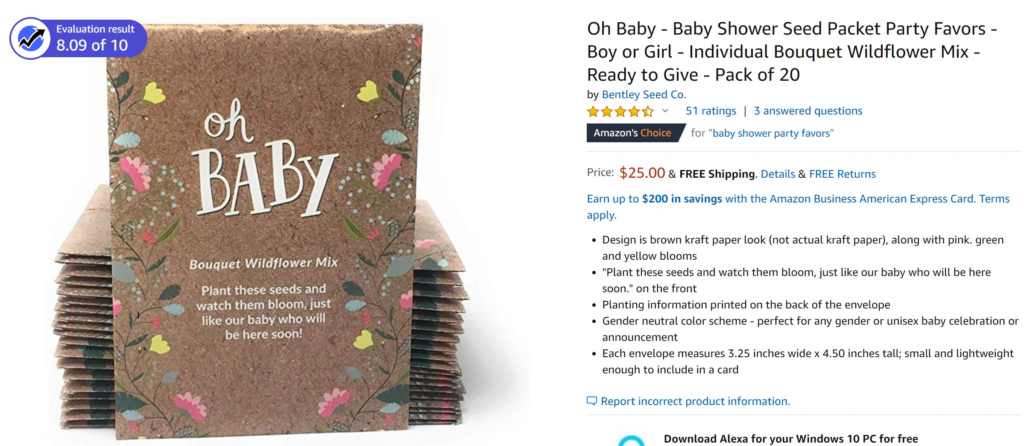
Let’s check to see the current revenue. This product was doing 4k a month in revenue (though, now 6k). This is an indicator, to some degree, that the potential revenue is high enough to be worth pursuing this product.

Next, we need to check what keywords this listing is ranking for.
We use Cerebro to find out…

Cerebro shows all the keywords this product ranks for in the top 304 positions.
This product ranks for over 400 keywords organically.
However, the ones on page one are the most important. This is because most buyers only shop from page one.
In fact, according to data reported by Amazon and independent studies, over 50% of shoppers do not go beyond the first page when searching for products on the site.
Here we’ll refine the search to keywords most likely generating sales. These are keywords that have at least SOME search volume per month.

On the surface, this looks like a great keyword opportunity.

BUT just because it is the most searched does not mean it is generating the MOST sales.
Remember, even if you have the greatest product in the world, you still have to compete for relevant keywords. Must check the competitive level of the relevant keyword, not necessarily the product (or keywords in the product’s title).
Next, search for competition
Go to Amazon.com and search for the keyword.

For page one of the search “baby shower favors” there are a lot of different products. However, none of them, except for our example, are flower seeds.
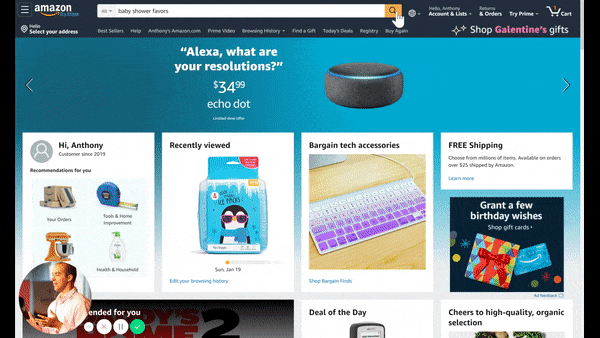
This means, it is likely not relevant enough for it’s most important keyword. There may not be enough demand, through this keyword search, for this product.
Another way to validate the idea is OFF Amazon.
Let’s go to Pinterest…

Looking to see if people on Pinterest are associating flower seeds with baby shower favors. Again, Pinterest is showing this trend doesn’t appear to exist.
Last off-Amazon resource we will consult is Etsy.

Again, there is no correlation with most buyers between flower seeds and baby shower party favors. This product simply does not pass our validation test. There does not appear to be demand for this product.
Next product “egg cartons”

Bradley likes to assess the sales and review count of a potential product idea. Page one for a relevant keyword that has a large number of very high volume sales will be much harder to compete on. Likewise, if a lot of listings have hundreds or thousands of reviews, it will be hard to compete for that keyword on page one.
This product looks promising because, while the sales revenue generated is decent, it is not incredible. Also, the average review count is fairly low.

Unfortunately, the average price is a bit low, which can mean little margins (and therefore little profit to grow) for a seller.
Here, Helium 10’s Profitability Calculator agrees. This product simply would not be profitable.

There are many other products that are easier to sell with lower competition and higher margins. To compete for this product the price would have to be too low to make any money.
HOWEVER
This page offers another keyword opportunity.
“Egg holder”

The products on page one are also very low priced. It is clear what is being sold on Amazon for this keyword is not viable.
But when we run the same keyword search on Pinterest, we notice something different. The products here are NOT what are being shown on Amazon. The theme here appears to be wooden egg holders.
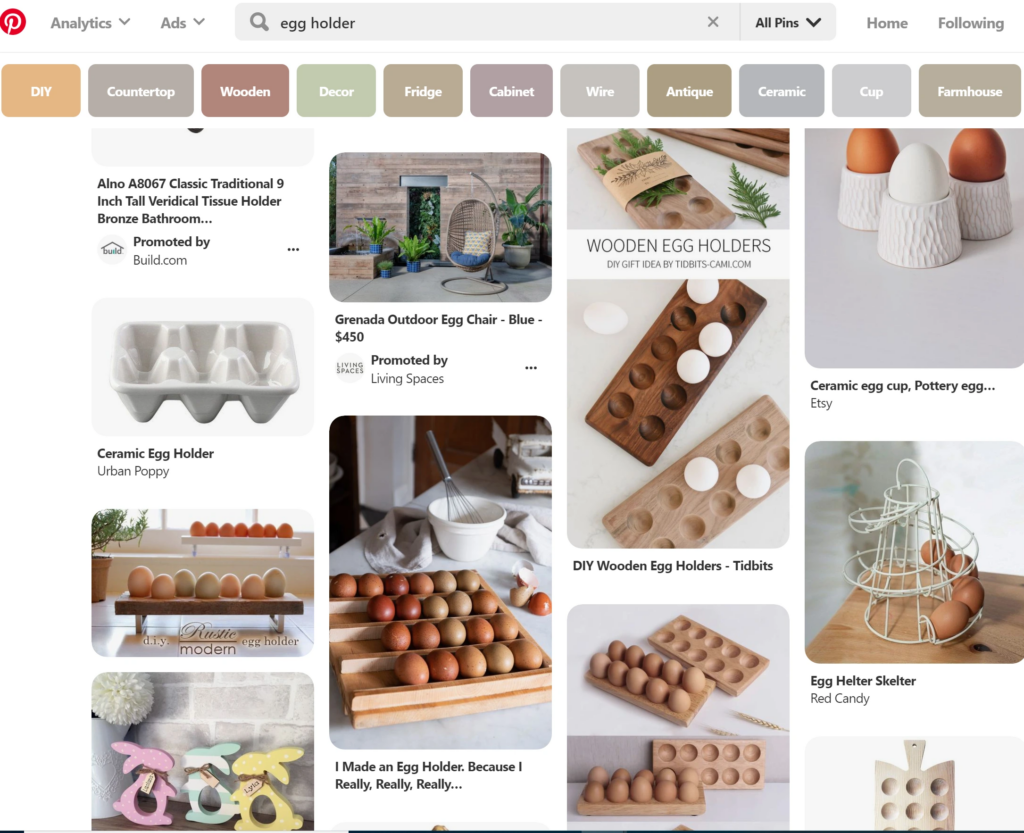
Why is this significant?
Because people on Pinterest are literally posting things that they like or that they are interested in. That is, in a nutshell, the purpose of the platform. This means that people like or are interested in wooden egg holders. And yet, there are none for sale on Amazon…
Turning the search for “egg holder” to Etsy.com yields similar results.
On Amazon.com, “egg holder” and “egg tray” only serve one result that would be considered a “wooden egg holder” and it appears to be struggling to stay in stock and sells at a much higher price point. So far, things look promising.
Now it’s time to utilize the power of Helium 10 tools and see if the search terms we’ve identified show any amount of real demand on the Amazon platform. We do this by using Magnet. We enter the keyword “egg holder” and not only do we see the estimated search volume of the keyword, but also related relevant keywords.


The important thing to note is that we are not just looking at search volume. Sure, this can be a good indicator of demand, but it isn’t the only good indicator. We’d also like to see if there are other keywords; multiple keywords that we may be able to generate revenue under.
Tim’s rule of thumb is to identify FIVE keywords that amount to a large number of searches when combined. This product/keyword opportunity passes that test as well.
The Problem With Traditional Methods
Most traditional methods of product research would reject this product (wooden egg tray) because it isn’t currently selling on Amazon, so there is no way to check sales revenue numbers.
If sales revenue is an important metric, then that means you are only identifying products that are already being sold by other people. This new method helps to identify opportunities that are currently untapped.
Running Down Rabbit Trails
You’ll notice the original product/keyword idea was “egg carton” which turned out to NOT be a great opportunity. However, because we employed a little creativity, we were able to use this method as a starting point that led us to a new opportunity.
By running down this rabbit trail, we’ve uncovered a product with serious potential.
For this reason, you must realize you shouldn’t get discouraged if many of your ideas don’t pan out. That is the nature of this method; it allows you to continue on, going down several trails until you uncover gold.
Third product: “burrito blanket”

When we run Xray on page one for the search term “burrito blanket” we get an idea of the current landscape on Amazon.

Remember, low revenue doesn’t necessarily mean you shouldn’t consider a product (our last example showed a product with no sales on Amazon). On the other hand, products generating high revenue on Amazon aren’t necessarily an indicator of guaranteed success either.
For our burrito blankets, we discover that a couple of sellers are generating an extremely large number of sales every month. This is a red flag.
Why?
First off, it will be incredibly hard to compete with those sellers. Sure, we may be able to out-optimize them, but clearly they’ve mostly cornered this market.
And second, this is the type of product all the sellers using traditional product research methods will inevitably find. When there are few competitors, high search, and abnormally large revenue numbers, these indicators are a beacon of almost surefire success to most other sellers.
And this will lead, quickly, to saturation.
A quick search on Alibaba.com (where many physical products are sourced from…more on that later) shows that there are a TON of manufacturers offering this product.

This means that manufacturers have already sensed the demand and is a pretty clear indicator of the saturation to come.
One final point to make, keywords with listings that are generating astronomical revenue numbers (over 100k per month for example) are often defended vigorously by competitors. On the same note, new listings that begin to perform well are often attacked by would-be competitors. Basically, keywords and products like that tend to be a magnet for black-hat tactics that could cause unnecessary headaches down the road.
Red Flags:
- A small number of sellers on page one generating unbelievable sales volume.
- All listings appeared nearly identical.
- Manufacturers are signaling a surge in demand.
- Some listings had unsustainably low prices.
Fourth product: “coffin bookshelf”

The first thing we notice about page one search results on Amazon for “coffin bookshelf” is that there are a lot of irrelevant products that show up. The fact that there are listings being served for the keyword “coffin bookshelf” that aren’t, in fact, coffin bookshelves, shows that there must be some demand that isn’t being met on Amazon’s platform.
A Quick Note On Fulfillment
We advocate for FBA (fulfilled by Amazon) because of its ease. After all, goods sold FBA are sent to an Amazon warehouse so they have to deal with storage, sending out the orders, and even returns. This is, essentially, how you put your business on “autopilot” (to some degree).
People who control their own inventory, fulfillment and logistics process often sell as FBM (fulfilled by merchant).
The advantage FBA products have is that they are automatically Prime eligible (meaning Amazon ships them within two days to Prime members).
So…if most of your competitors are FBM, then you could sell the exact same product and manage to outperform your competition with relative ease.
Moving on with our validation of “coffin bookshelf”…
The original keyword, before following a rabbit trail, was “gothic decor.”
If we search for “gothic decor” on Amazon, we see it is a much broader term with many varying items on page one. This indicates that there is much more keyword potential for a coffin shelf product (meaning we could probably rank for many keywords that have revenue-generating potential).
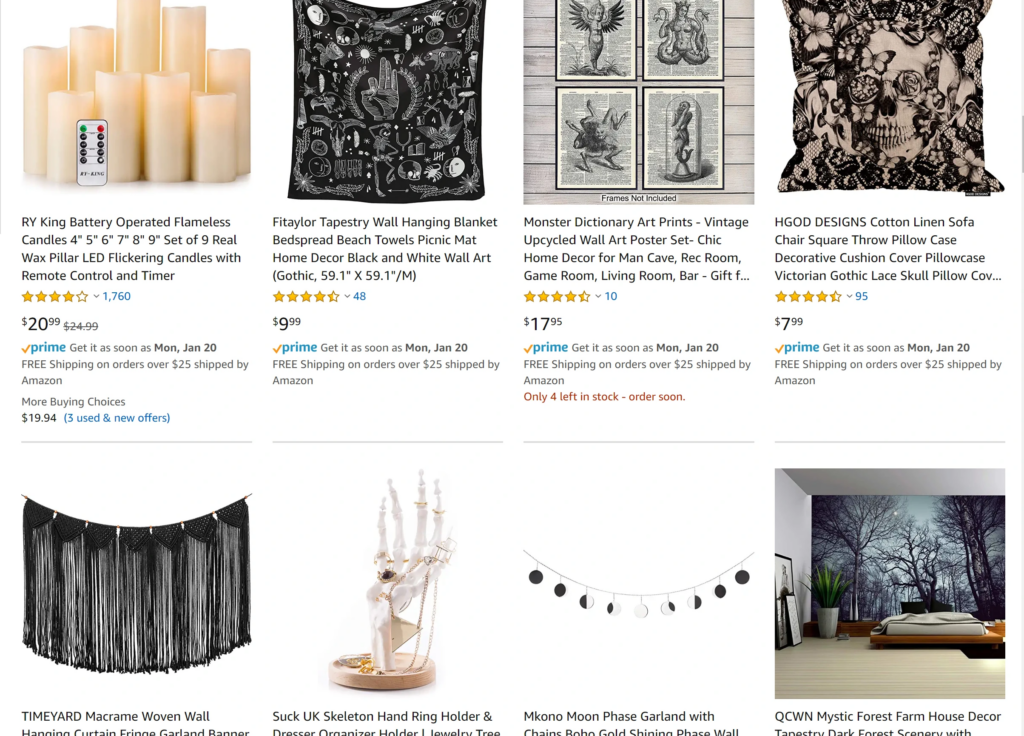
Just like in previous examples, now is the right time to search in Magnet to see if “coffin shelf” can lead us to more relevant keywords.

Most conventional training on product research will state that low search volume is an indicator of what to avoid. However, with this method, products with many lower volume search terms can generate stable revenue.
This makes it much easier to launch. Other side effects of an easy launch include:
- Higher margins
- Less expensive advertising
- No elaborate promotions
- Highly repeatable
- Less risk
- Almost no competition
The term coffin shelf appears to have lower search volume (less than 3,000 searches per month), but due to the specific nature of the term, it is very likely searchers would have higher than average buying intent.
There are also likely many other search terms that would lead to potential revenue for this product.
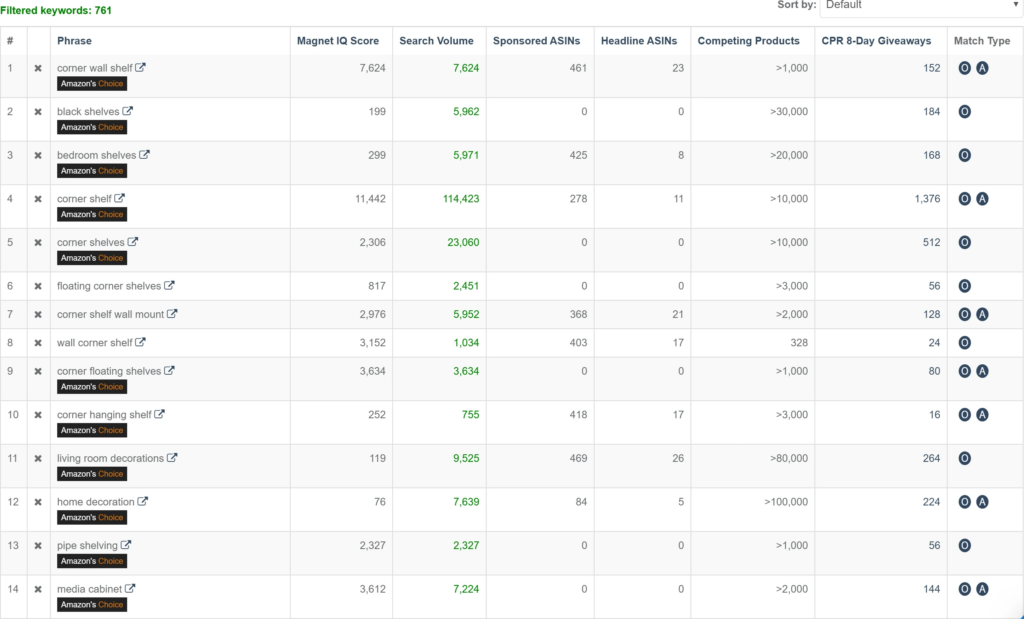
A refinement in Magnet uncovers dozens of new potential keywords related to the gothic theme of this product.
Most of these lower volume, hyper-specific keywords would likely be extremely easy to rank well for, and therefore generate small amounts of revenue that accumulate into a respectable number.
Now we want to get more details on exactly what IS selling on Amazon. This allows us to learn more about precisely what challenges may arise with this product. So, next, we need to look at a coffin shelf seller’s storefront and search their coffin shelf inventory.
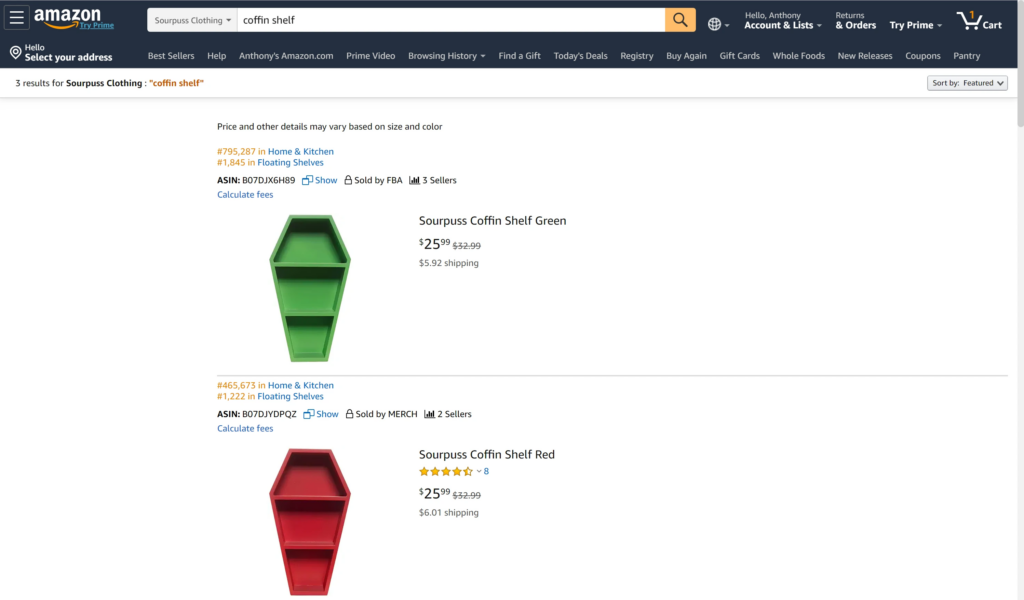
This particular query leads us to search deeper as we cannot see firsthand the most logically popular color for a gothic decor item; black.
When we do an advanced search with Helium 10’s Black Box, we can see black coffin shelves that are out of stock. This also shows us that the out of stock variation is the more popular one as indicated by the higher number of reviews (as we suspected).

Side Note: What Is BSR?
BSR stands for “best seller rank” and is, rather obviously, the sales rank of a product. The lower the number, the better the rank. So, the product with BSR of 1 in its category is the number one selling product in that category.
This means we can use a listing’s BSR number to figure out their revenue.
If we look at this Sourpuss Coffin Shelf listing, we see the BSR number indicate what level it typically sells at and when it likely has gone out of stock.

This chart shows us that this product gets consistent sales except for when it is out of stock. Meaning, the demand is high enough for this seller to continuously run out of their most popular variation.
The best part about this is, the product would likely fly under any other seller’s radar due to so many out of stock months causing it to show poor monthly revenue (another reason not to hinge so much of your decision on revenue numbers).
The next validation metric we look at is Helium 10’s Trendster, which pulls data from Google trends. This shows us how interested in our keyword the rest of the internet likely is. It appears “coffin bookshelf” has pretty massive potential interest.

And finally, the last validation metric takes us to Alibaba.com to make sure there aren’t any unexpected surges in interest from sellers already under way.
Thankfully it doesn’t appear that this product has landed on manufacturer’s radar either.
What We Can Determine
For the coffin bookshelf, we can definitively say:
There is demand
There is low competition
This is a fantastic illustration of how the right tools (Helium 10) combined with the right methods can lead to a goldmine in products for Amazon FBA.
One thing to note is that while the process has been similar for each product, it hasn’t been identical. That is because the method isn’t rigid. This is a fluid method with fundamental principles, but that requires both data and a little bit of creativity.
Next product: “hatchet”

Upon searching for the very competitive term “hatchet” we find something interesting; a non-compliant main image.
A Note About Image Compliance
According to Amazon’s terms of service, the main image of a listing must be on a pure white background.

This could be an indicator that it is a very popular item.
The next step is to run the ASIN for a high ranking listing through Helium 10’s Cerebro. This helps us identify other keywords to rank for (we’d like to avoid “hatchet” since it is so broad and competitive).
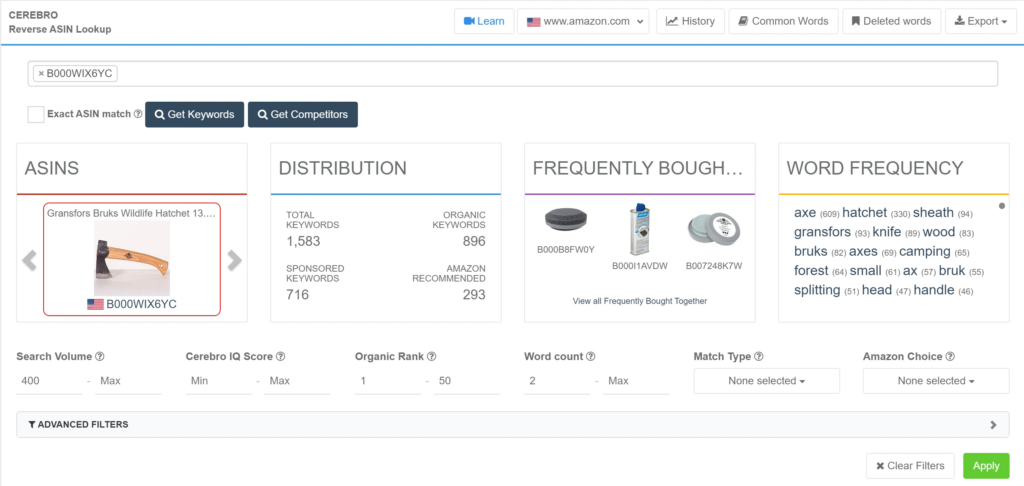
After eliminating brand names, we can see quite a few potential new keywords with lower search volume but more specific (intention-filled) terminology.

Moving our search for a lower volume but more specific keyword to Amazon (“forest axe” seems like a good start), we see that most of the products on page one are exactly like what we’ve found. This is an indication that this keyword is relevant.

Aside from the relevance of specific keywords, the price points for competitor products is also attractive. People are spending over $60, $70 and sometimes even over $100 on these “forest axes” and yet the quoted price at Yiwu for the same product was only a few dollars.
Even if we sold this product at half what many sellers are retailing the SAME ITEM for, profit margins are huge.

With that level of profit margin, you have plenty of room to either adjust price or market and advertise.
The next validation step we want to take is to put our new keyword through the Pinterest test.
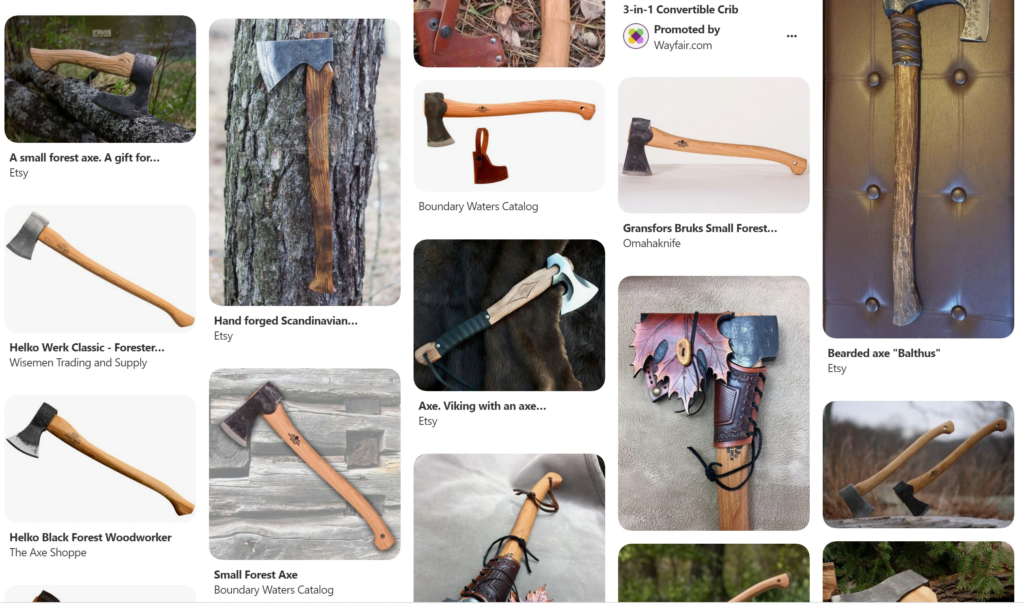
We see that this version of hand axe is in demand there.
But just to be sure, we’ll also run the Pinterst test on the much more generic term “hatchet” to see if this product really is something with broad appeal.

It looks like this type of axe is, in fact, a crowd favorite.
At this point we’ve put five keywords through the first step of validation:
- Baby shower party favors
- Wooden egg tray
- Burrito blanket
- Coffin bookshelf
- Forest axe
Out of these, it appears the three with the highest potential are:
- Wooden egg trays
- Coffin bookshelf
- Forest axe
We have quite a few hypotheticals, but in the next episode, we will validate further by testing and obtaining exact data. We’ll uncover how to get Amazon to tell us directly how competitive these products are.
In the meantime…tell us…
What different methods to find ideas do you use?
What was the most interesting thing you learned?
Which products that we found are your favorite?
Achieve More Results in Less Time
Accelerate the Growth of Your Business, Brand or Agency
Maximize your results and drive success faster with Helium 10’s full suite of Amazon and Walmart solutions.